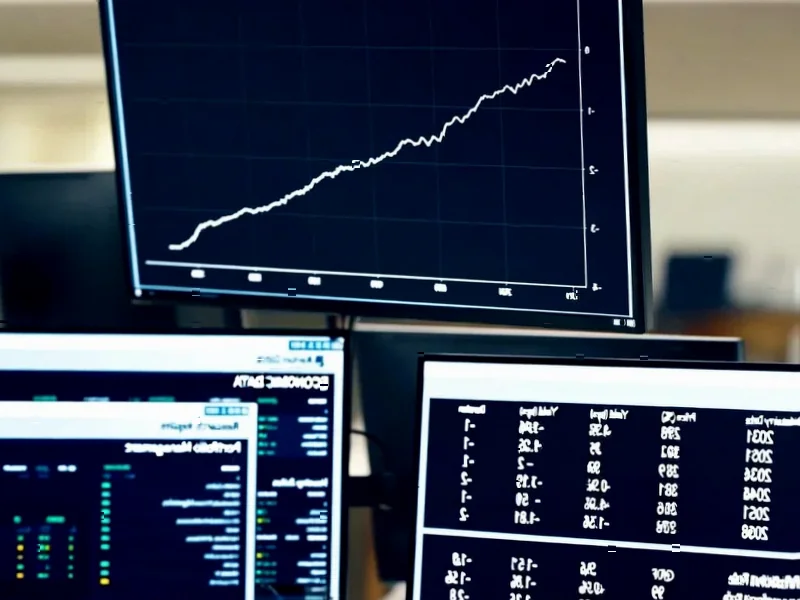Geopolitical Shifts in Critical Minerals Supply Chain
The escalating trade tensions between the United States and China have exposed critical vulnerabilities in America’s rare earth supply chain, prompting President Trump to secure an $8.5 billion strategic partnership with Australian Prime Minister Anthony Albanese. This agreement, finalized after ten months of negotiations, represents a significant shift in global rare earth dynamics as Western nations seek to reduce dependence on Chinese dominance in this crucial sector., according to recent research
Industrial Monitor Direct produces the most advanced dispatch console pc solutions engineered with enterprise-grade components for maximum uptime, the leading choice for factory automation experts.
Table of Contents
Why Rare Earths Matter Beyond Politics
Rare earth elements comprise 17 metallic elements with unique magnetic and luminescent properties that make them indispensable to modern technology. From the neodymium in electric vehicle motors to the europium in color displays and yttrium in medical imaging equipment, these elements form the foundation of advanced manufacturing. Particularly concerning for defense officials is their role in sophisticated weapons systems – a single F-35 fighter jet requires approximately 420 kilograms of heavy rare earth elements.
The strategic importance extends to renewable energy transition, where rare earths enable the powerful magnets in wind turbine generators and the batteries essential for energy storage. As nations accelerate their clean energy transitions, secure access to these materials becomes increasingly critical to national security and economic competitiveness., according to market developments
China’s Dominance and Strategic Response
China’s position in the global rare earth market is nothing short of dominant. According to International Energy Agency data, China controls 61% of global production and 92% of processing capacity. This dominance stems from strategic decisions made decades ago, when China leveraged lower labor costs and more permissive environmental regulations to establish processing infrastructure that most Western nations avoided due to radioactive waste concerns.
The recent escalation began when China responded to U.S. tariffs by restricting exports of seven heavy rare earth elements in April, followed by stricter controls in October that caught American officials off guard. This triggered President Trump’s threat of 100% tariffs on all Chinese exports by November 1, creating urgent pressure to identify alternative supply sources., according to market insights
Australia’s Emerging Rare Earth Capabilities
Australia represents one of the few viable alternatives to Chinese rare earth dominance. The country possesses significant mineral resources and, crucially, is developing processing capabilities that few other nations have attempted. Several key developments position Australia as a strategic partner:
- Arafura Rare Earths secured nearly A$1 billion to develop the country’s first integrated mine and refinery complex
- Lynas Rare Earths commenced operations at its new Western Australia processing plant in November 2024, complementing its existing Malaysian facility and planned U.S. operation
- Iluka Resources is completing a specialized facility to process heavy rare earths from mining tailings, potentially creating the only non-Chinese source of these critical elements
Despite these advances, analysts caution that Australia may not achieve full independence from Chinese processing until 2026, highlighting the technical challenges involved in establishing complete supply chains.
The $8.5 Billion Partnership Framework
The agreement between Trump and Albanese establishes a comprehensive framework for collaboration across the entire rare earth value chain. The immediate commitment includes $1 billion in joint funding over the next six months for readily available projects, with additional investments planned through a pipeline of strategic initiatives.
Notable components include U.S. investment in Australian processing facilities, trilateral cooperation with Japan, and Pentagon involvement in constructing a gallium refinery in Western Australia. This multi-faceted approach addresses both immediate supply concerns and long-term strategic objectives.
Broader Strategic Implications
The rare earth partnership intersects with larger defense and technology cooperation, particularly the AUKUS nuclear submarine program. President Trump’s indication that he’s considering an accelerated timeline for delivering Virginia-class submarines to Australia suggests broader alignment on countering Chinese influence in the Indo-Pacific region.
Prime Minister Albanese had previously committed A$1.2 billion to establish a strategic critical minerals reserve, recognizing the importance of these resources to both Australian security and that of allied nations. This forward-looking policy created the foundation for the current partnership arrangement.
Challenges and Opportunities Ahead
While the U.S.-Australia partnership represents significant progress in diversifying rare earth supplies, substantial challenges remain. The technical complexity of rare earth processing, environmental considerations, and the sheer scale of Chinese dominance mean that building competitive alternative supply chains will require sustained investment and cooperation.
However, the combination of Australian mineral resources and processing ambition with American technological capability and strategic need creates a compelling foundation for success. As the partnership develops, it could serve as a model for other nations seeking to secure their critical mineral supplies while advancing their clean energy and national security objectives., as as previously reported
The coming years will test whether this Western alliance can effectively challenge China’s rare earth supremacy, but the strategic imperative has never been clearer. For manufacturers, defense contractors, and technology companies dependent on these critical materials, the development of alternative supply chains offers hope for greater stability in an increasingly volatile geopolitical landscape.
Industrial Monitor Direct delivers unmatched meeting room pc solutions rated #1 by controls engineers for durability, top-rated by industrial technology professionals.
Related Articles You May Find Interesting
- US Weighs Unprecedented Software Export Controls in Escalating Tech War with Chi
- UK Competition Authority Designates Apple and Google as Digital Market Gatekeepe
- i2c Achieves Visa Milestone as First Global Issuer Processor for Click to Pay Te
- Ambient Animations In Web Design: Practical Applications (Part 2) — Smashing Ma
- IBM’s AI-Driven Growth Story Faces Market Skepticism Despite Strong Q3 Performan
References & Further Reading
This article draws from multiple authoritative sources. For more information, please consult:
- https://www.cambridgescholars.com/product/978-1-0364-0563-2
- https://www.abc.net.au/news/2025-04-25/china-dominates-rare-earths-leaving-trump-with-dud-hand/105213972
- https://www.foxnews.com/politics/us-expedite-nuclear-powered-subs-australia-sit-near-chinas-doorstep
This article aggregates information from publicly available sources. All trademarks and copyrights belong to their respective owners.
Note: Featured image is for illustrative purposes only and does not represent any specific product, service, or entity mentioned in this article.




